BRURAL: A PERIPHERAL VISION – BROOKLYN AND RUSSIA
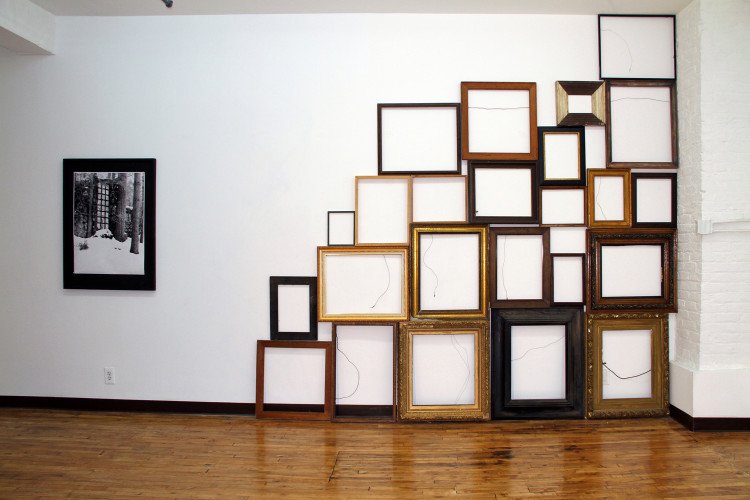
There is an exciting and hidden part of Russian art (and Russian artists) that has not yet been discovered. In the same way, there is something latent and full of possibilities, that has not yet been unearthed of the Brooklyn art scene (or Brooklynite artists). That is what “Brural: A peripheral vision” reveals as the latest exhibition at The Active Space, in Bushwick.
The things that build a general idea about Russia’s cultural life in our Western collective unconscious are traditionally limited to cities such as Moscow or Saint Petersburg. In a country as overwhelmingly vast and wide as Russia, we can imagine how extremely focused and partial that idea is. With this exhibition, we discover another Russia, an area in the middle of the country, in the eastern part of the Ural Mountains, with an extraordinary cultural life, and very active artists. “Brooklyn”, on the other hand, is a very specific place, a name that immediately bombs our memory with cultural references that have grown in it through cinema, literature, television, and, of course, art. But what are the odds that we know what Brooklyn’s cultural life is like exactly, who contributes to it, in a more or less public way? Apart from the occasional opening or performance that we are invited to by a friend of a friend, we don´t really go further on that enchanting short story, we generally don´t know about the novel.
And that situation of artistic obscurity of some groups or individuals in our society (centered here in Brooklyn and Russia) is the theme that Daria Kostina and Irina Danilova have chosen in the context of a project that has been developed through these past years to rescue and bring to light that peripheral part of the arts. Why “Brural”? “Brural” is a word play, a conjunction of the scenarios in which these stories take place: Brooklyn and the Ural region of Russia. Both have a relatively recent rural past, still being transformed, as modern life is installed in their area, fighting their way to a place as important and thrilling as other centers of the world. That “rurality” brings the idea of periphery; the things that had been kept from the center by the center itself, ignored in pursuit of a specific speech with its own rules, which are far apart from the rules, or lack of them, of the peripheral visions. This exhibition opens the doors of that art scene that was kept away, for different reasons, from the artists that never, or hardly ever, were allowed to be part of it. But this is a different art scene, a scene where visions are reconsidered and artists are invited to initiate a dialogue with themselves and others from the periphery itself.
As we walk in the exhibition, a video brings attention to our senses: in a very modest room, an old man with a long beard and humbly dressed sings and talks with the appearance of a guide, surrounded by young people. He is the main character of a visual document that talks about a story, not exempt of mystery, which we never heard of. In Russia, however, it was well known in certain circles, and now it is rising as the consciousness of its interest comes up, settled by the recent opening of the Starik B. U. Kashkin Museum in Ekaterinburg. B.U. Kashkin, pseudonym of Evgeny Malakhin, was a ground-breaking multifaceted artist performing his activities during the Soviet period. As the curators of the exhibition explain, the sole idea of being an artist at the periphery of the Socialist Realism was already a firm manifesto of freedom, freedom in creativity and self-expression, which was continued in the 1980´s by the artists that surrounded him, gathered in the group “Kartinnik”.
The video is a prelude to the display of artists that follow, in their own personal way and for different reasons, the characteristics of an art condemned to obscurity. Until now.
Oleg Elovoy, for instance, created moments of extreme poetic activity when he decided to preserve the winter in a plastic bag, claiming for the artistic status of the change of season. Or when his body laid in bed in what had been his house and center of the artistic life of Ekaterinburg during the 1990’s, obligated to resettle, without a place to do so, because of the demolition of that magical place where things happened. John Kudryavtsev also made of his home a place of continuous activity, but in his case without any artistic intention (the paradigm of the artist that creates art without knowing -or perhaps without wanting to know-for the sake of the creation itself). In a different context, not in the Urals, but neither in Brooklyn, Ukrainian artist Vladimir Danilov exposes in his videos the idea of difference in perception: visual impressions perceived with optical effects that can vary for each one of us. Suffering from social isolation due to dyslexia since he was a child, he was never exhibited before, but he opened the path to a series of young artists influenced by his creative technique and ideas.
Other names and other paths mark the Brooklyn presence in the gallery, exhibited after remaining silent for years for different reasons, including the self-imposed idea of their art as something only shown in their private lives. Alberto Bursztyn, who created some of his pieces specifically for this exhibition, presents collections, works that are not distant from Duchamp’s objets trouvés, but reinterpreted as part of the components of a Brooklyn life. Objects found in the streets or in dumpsters, such as a series of stacked perfect cubes made out of hangers hooked on each other, creating a white net in an empty space that is elevated towards the ceiling. It brings to attention that tendency to verticality in his pieces, also noticed in a pile of chairs creating a shape that, inevitably, brings out the memory of a Brancusi. Poet Iris Berman also found things. Her collages, made with pieces of paper and cardboard that she discovered in random places are displayed and exhibited here for the first time, in horizontals that simulate the lines of a poem. In many cases we can feel a fine sense of humor with the word games displayed in her collages, that go very well with the general idea of this exhibition, and that bring up her poetic instinct (her collages are, as a matter of fact, discovered now by many people that knew her only as a poet who wrote poems on paper, and not by finding and playing, cutting and pasting). Eric Pesso is presented as a great discovery of wooden sculpture, delicately carved and polished from trees that grow in Brooklyn. His ellipses, parabolas and lemniscates project the mathematical beauty of the Möbius strip or the impossible constructions of Escher’s fantasies (this connects us to Danilov’s suggestive and impossible shapes). Like Bursztyn, his intention was never exhibitive.
There are many focal points like Brooklyn, or the Ural region of Russia, were things that were occurring, that keep occurring, are waiting in the corner of a room or a workshop next to a garage. The things that are part of that alternative artistic world are waiting for us to discover them and meditate about how the mainstream of art works in our days, and especially how we look at it. But yet, how many approaches are starting to happen to the arts that are far away from the center! Those works and pieces are revealed when one digs in the ground of other territories, and with the hands full of dirt, extracts from the soil the hidden objects of a different and thrilling art history.
There is an exciting and hidden part of Russian art (and Russian artists) that has not yet been discovered. In the same way, there is something latent and full of possibilities, that has not yet been unearthed of the Brooklyn art scene (or Brooklynite artists). That is what “Brural: A peripheral vision” reveals as the latest exhibition at The Active Space, in Bushwick.
The things that build a general idea about Russia’s cultural life in our Western collective unconscious are traditionally limited to cities such as Moscow or Saint Petersburg. In a country as overwhelmingly vast and wide as Russia, we can imagine how extremely focused and partial that idea is. With this exhibition, we discover another Russia, an area in the middle of the country, in the eastern part of the Ural Mountains, with an extraordinary cultural life, and very active artists. “Brooklyn”, on the other hand, is a very specific place, a name that immediately bombs our memory with cultural references that have grown in it through cinema, literature, television, and, of course, art. But what are the odds that we know what Brooklyn’s cultural life is like exactly, who contributes to it, in a more or less public way? Apart from the occasional opening or performance that we are invited to by a friend of a friend, we don’t really go further on that enchanting short story, we generally don’t know about the novel.
Eva Rick
Position the cursor on the images to view captions, click on images to enlarge them.
Posizionare il cursore sulle immagini per leggere le didascalie; cliccare sulle immagini per ingrandirle.

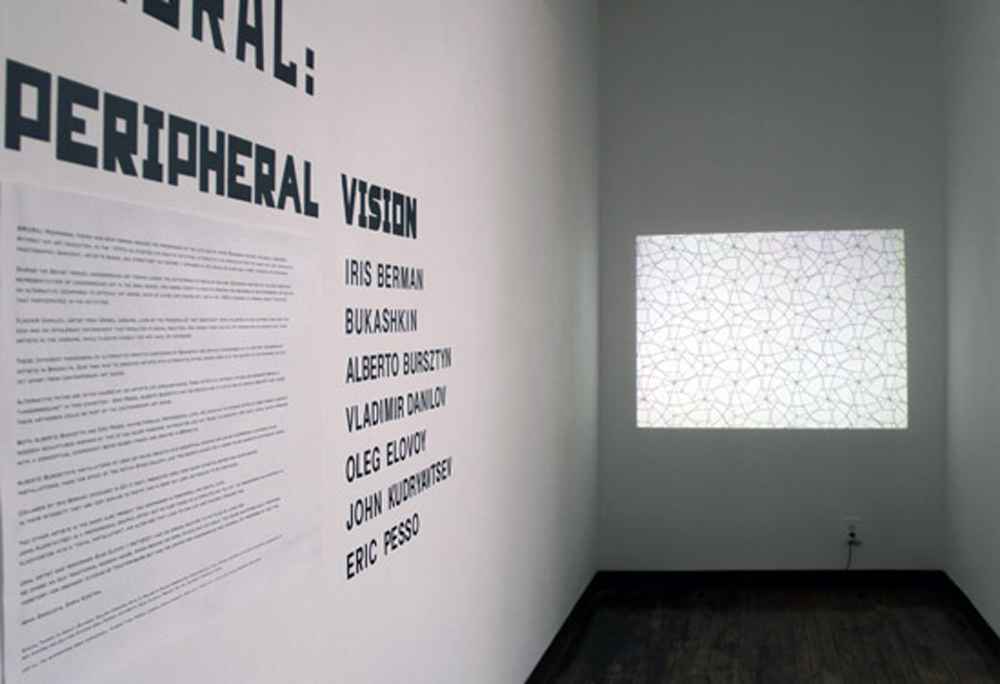
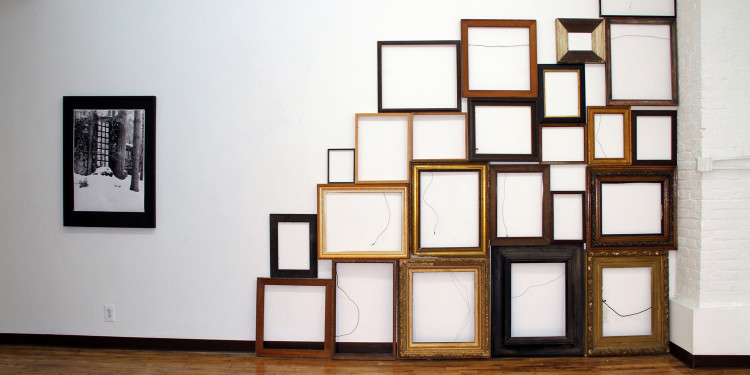

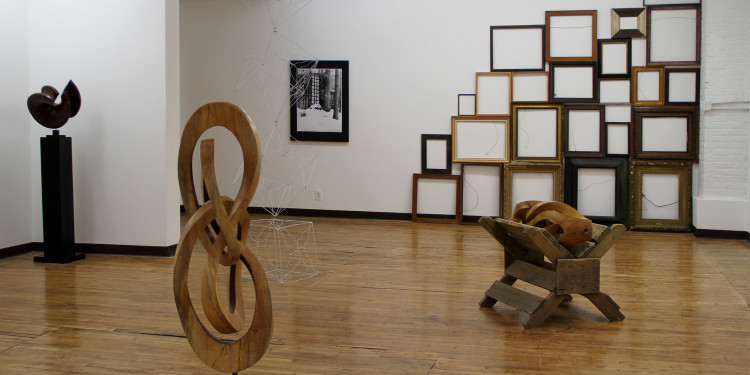
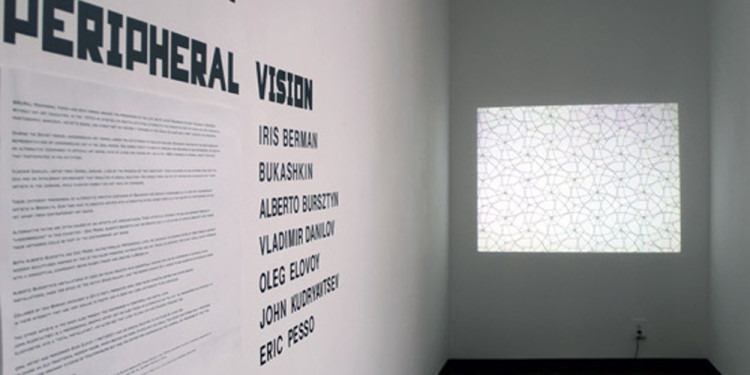
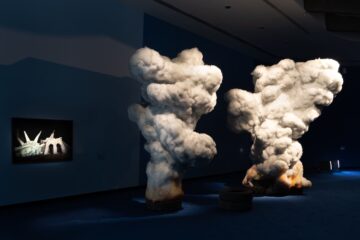
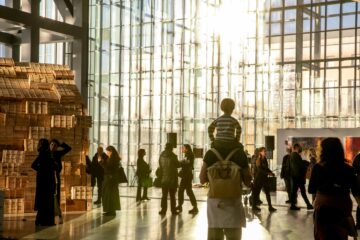
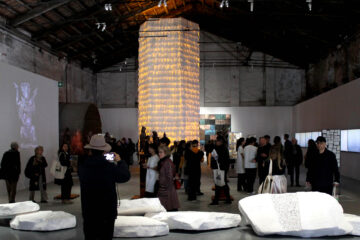
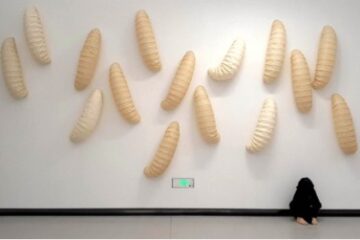
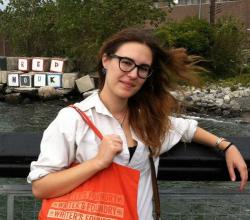
No Comment